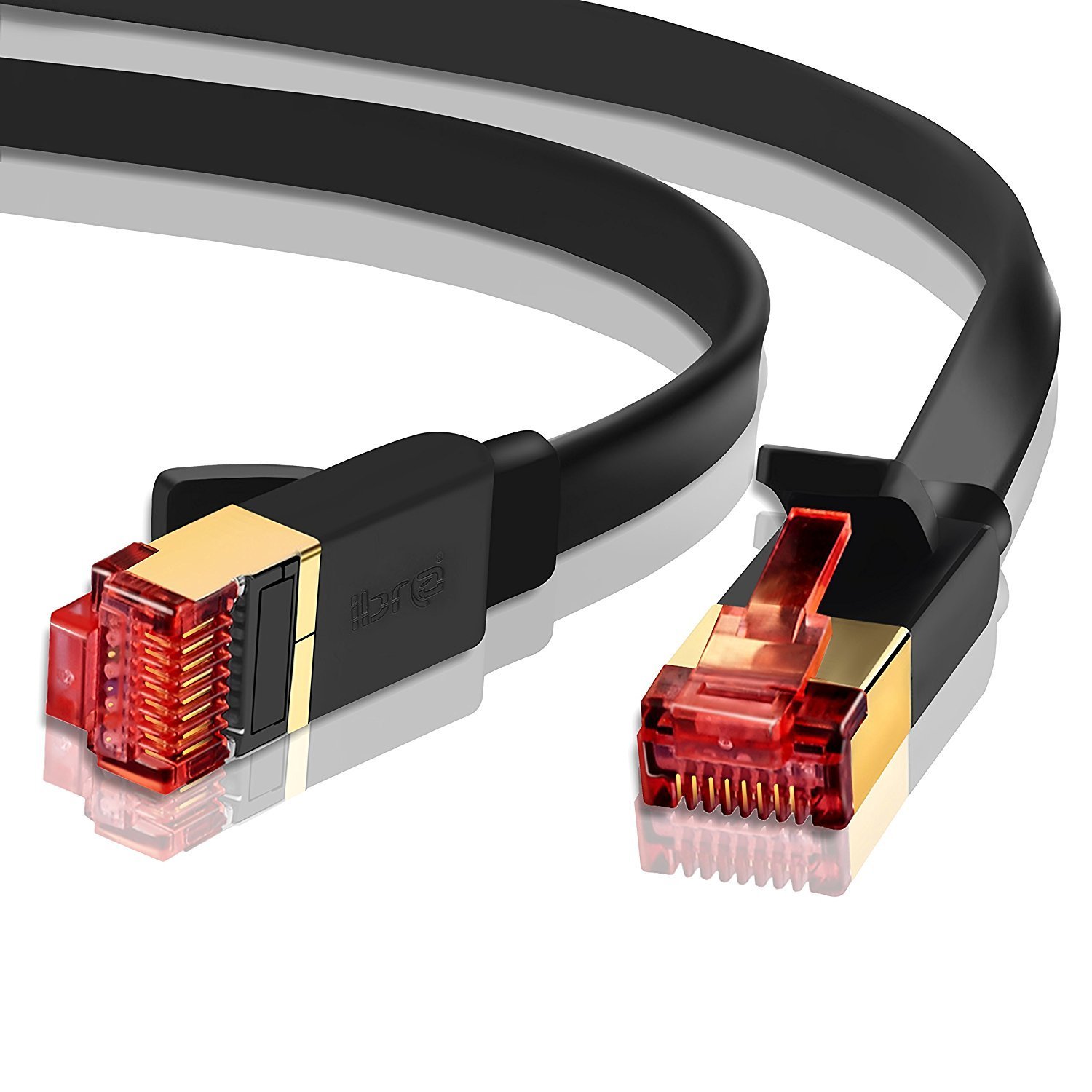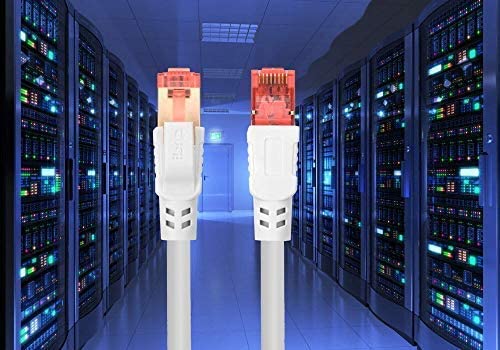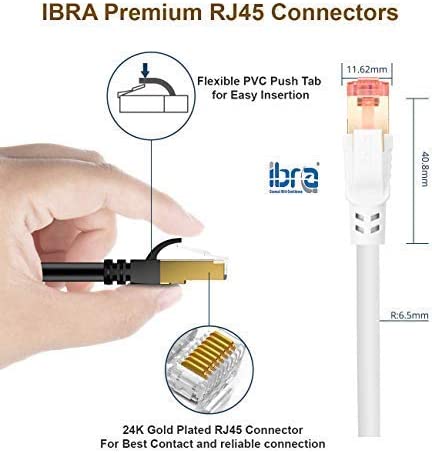Check Out The Difference between cat7 and cat8 Ethernet cable That Internet Will Not Tell You

“I want to install Ethernet Cable for my new house. When I checked the store, there are so many options like Cat7 and Cat8. I am really confused to select the right cable. Can you please help?”
This is one of the most common types of queries we can see on the forums. Any layman who does not have the core knowledge regarding these technical details of wiring and cables may not have any idea how to make the purchase decision. On the other hand, installing the Ethernet cable is quite simple so that one doesn’t need the help of the technician. When you know what the difference between the Cat7 and Cat8 Ethernet Cable is, then there will be no look back for you.
So, here we are to help you by giving a clear conception about the Ethernet Cable categories and the difference between Cat7 and Cat8 Cables.
Not only Cat7 and Cat8, but there are also many other categories like Cat5, Cat5e, Cat6, Cat6a, etc are available in the market. As most of the people don’t have the exact knowledge about these categories, they don’t know which one is suitable for their network set up.
However, much attention nowadays is gathering for Cat7 and Cat8 only. So, here we will discuss in detail the difference between these two types of Ethernet cable. Before that, we will take a look at the Ethernet Cable itself along with these two categories.
What Is Ethernet Cable?
The Ethernet Cable is the most popular networking cable for wired internet network. For a Local Area Network, the cable is used to connect the computers, routers, modem, and switches. The Ethernet Cable is an internationally accepted standard for the internet industry and supported by all the related devices. There are different types of Ethernet cables supporting one or more than one industry standards like Category5 or Category6. Each of the categories is designed for a specific network standard and speed.
If you consider Cat5, then you must know that it supports 10-100 Mbps speed which is pretty slow in today’s time, whereas Category 5 Enhanced or Cat5e can ensure 1000 Mbps and Cat6 can support up to 10-gigabit speed.
However, the 10-gigabit speed was not sufficient for the users, and for that reason; the manufacturers have launched two more versions Cat7 and Cat8.
So, here we will discuss the last two generations of the Ethernet cables to know the difference between them.
What is Cat7 Ethernet Cable?
The Category 7 cable or popularly known as the Cat7 is used to deliver the core infrastructure applied in the wired Gigabit Ethernet setup in any infrastructure. This high-end data transfer patch cable can support up to 10 Gbps of Ethernet communication. As the cable is backwards compatible, it is much user friendly and compatible with the Cat5 and Cat6 port as well. You can easily team it up with the previous versions of the Ethernet cable to set up the network.
The Cat7 Cable is fully shielded in order to save it from tear and wear. The internal section of the cable is made of twisted pairs of wire. For that reason, it is known as Screen Shielded Twisted Pair (SSTP) or Screened Foiled Twisted Pair (SFTP). Each of the wire is shielded to ensure the elimination of interferences and cross-talks. In this way, the users can get a better high-quality data transfer with higher speed even though the longer cable.
The 100m Cat7 Ethernet cable has 4 connector channels that are designed for transmitting signals at the frequency of 600 MHz. It can meet the expectation of the faster data transfer rate and internet connection of the commercial as well as industrial sectors.

Specification of the Cat7 Cable:
The specification of the Cat7 Cable is defined in the ISO/IEC 11801:2002 (Information technology - Generic cabling for customer premises) which is also known as Class F standard. As per the specifications, the Cat7 cable must have the following things.
- It must be capable to deliver a particular data transmission rate for a certain range of distance
- It will have a special noise-resistant capability along with to block crosstalk
- It must be able to cope up with the potential problematic hazards in the environment while keeping up the speed of the transmission.

What is Cat8 Ethernet Cable?
The Category 8 or Cat8 Ethernet Cable is the latest introduction complying with the IEEE standard for the copper Ethernet cable. It comes with an exceptionally high-speed data transfer speed that has outnumbered all the previous versions. Cat8 is recognized as hugely advanced than its previous version that is Cat7 because it can support a high range of frequency even up to 2 GHz. For the length, the reel of Cat8 is limited to 30 meters with two connector channels.
It also comes with a shielding wire structure. Generally, the cable supports 25 Gbps speed but it can go up to 40 Gbps in some cases. There is no much difference between Cat8 and previous versions in terms of the look and physical appearances.
The Cat8 Ethernet cable is terminated with RJ-45 or non-RJ-45 connections. The cables also have backward compatibility so that you can use it with any standard Cat7 cable as well.

One of the most important features of the Cat8 cable is shielding. To protect the internal conductors from the effect of the EMI (Electromagnetic Interference), the cable comes with Shielded Twisted Pair (STP) along with a layer of conductive material as part of the jacket of the cable. As a result, data transmission can see little error and higher speed.
Another key feature is that this advanced Ethernet cable has the wrapping of foil on the twisted pair in order to eliminate crosstalk virtually and ensure higher speed for data transmission. As a result, the Cat8 cable has become sturdier and heavier with longer life. However, it also makes this rigid cable tough to install in the tight space due to a lack of flexibility.
The Cat8 cable is hugely used in the data centers and server rooms for a switch to switch communication when the common networks are 25GBAse-T and 40GBAse-T. The RJ45 connectors are used to connect the standard network equipment including routers and switches to upgrade the 25G or 40G network without complete equipment overhaul.

What is the difference between the Cat7 and Cat8 Ethernet Cable?
After all the discussions, you may have already got an idea about both the categories of Ethernet cables and most importantly how these two are different from each other. It is the general rule that the higher number indicates newer technology that supports higher data rates. There are many factors as well like performance, speed, shielding, and length of the cable on which you can compare these two types of cables.
Factors that differentiate Cat7 and Cat8 Cables:
Performance: There are two factors to decide the performance of the Ethernet cable and those are; Standard bandwidth which is measured by MHz and maximum data rate which is measured by megabit per second. The Cat7 can provide a speed of 600 MHz. on the other hand, Cat8 is quite ahead of the Cat7 cable as the latest one can provide you 2000 MHz speed. In this respect, we can say that the Cat8 is miles ahead of Cat7.
Length: For Cat7, the maximum cable length can be 100 m with 10Gbps for the network. However, the Cat8 can cover a shorter distance as then cable is limited to 30m with 25Gbps and 40Gbps.
Shielding: Both the cable follows the same shielding construction. The Cat7 cable has extensive shielding to reduce attenuation. Moreover, they also need the special GigaGate45 Connector to attain the benefits of the high-performance feature of the cable. Cat8 also requires shielding. The Cat8 cable construction will be 22-AWG S/FTP cabling.
Price: The Cat8 has lots of features in it that increase the cost of manufacturing. As the result, Cat8 has become the most expensive cable in the Ethernet category.
Summary of the differences between Cat7 and Cat8 Ethernet Cable:
|
Feature |
Cat7 |
Cat8 |
|
Transmission Speed |
10Gbps |
25Gbps and 40Gbps |
|
Frequency |
600 MHz |
2000MHz |
|
Distance |
100m |
30m |
|
Connector Type |
Non-RJ45 |
Class I: RJ45, Class II: Non-RJ45 |
|
Number of Connectors in Channel |
4 |
2 |
|
Cable Construction |
Shielded |
Shielded |
|
Price |
Expensive than the previous version |
Highest among the existing categories |
What you should select Cat7 or Cat8?
Before selecting any Ethernet cable for your network, you have to identify the actual purpose of the wire first.
If you have the requirement for a wider network, then Cat7 is a great option. For larger enterprises and data centers, the Cat7 is a popular choice. It is an excellent choice for the home network as well because the home networks don’t have any switch that needs more than 1Gbps.
In the USA, the Cat7cables are not recognized by the EIA/TIA. Moreover, the Cat7 does have the 8P8C RJ-45 connectors that are considered as the standard. However, to ensure the performance, it uses GG45 connectors.
If you want a next-generation cable, then it is worth to invest in Cat8. To enjoy the internet at the highest possible speed, this cable is a great choice.




